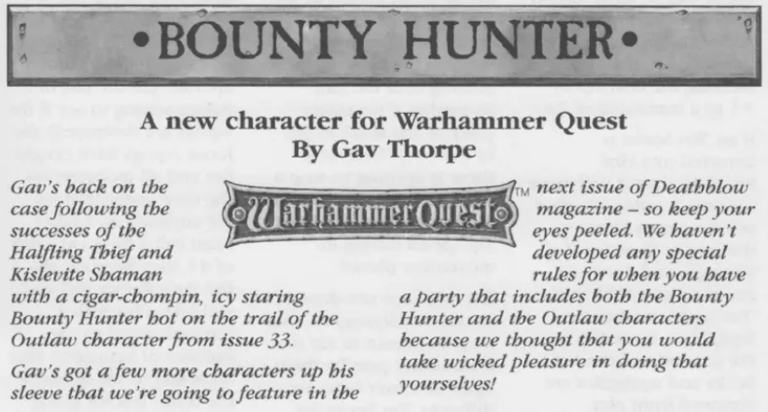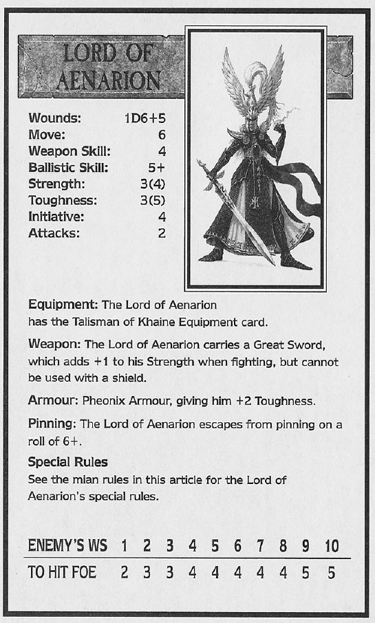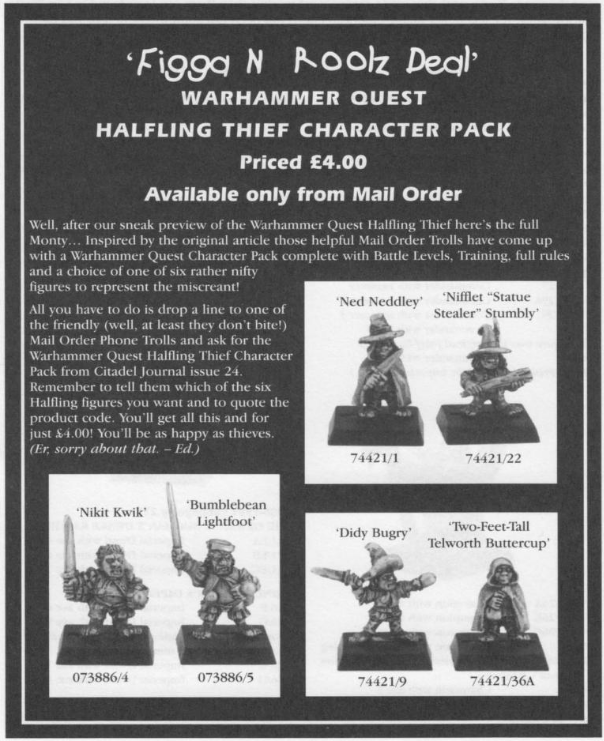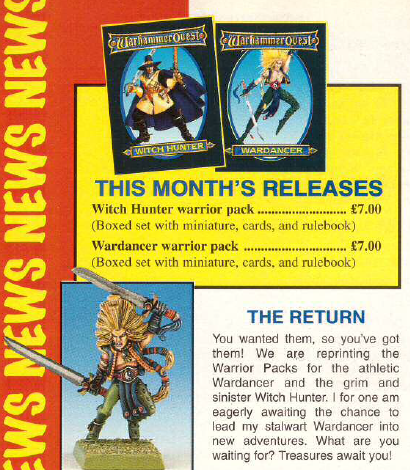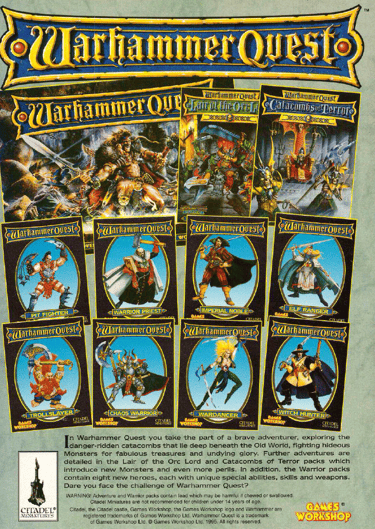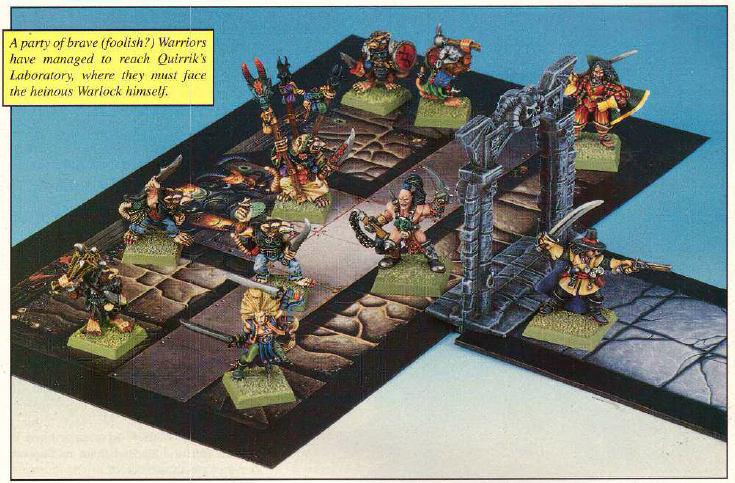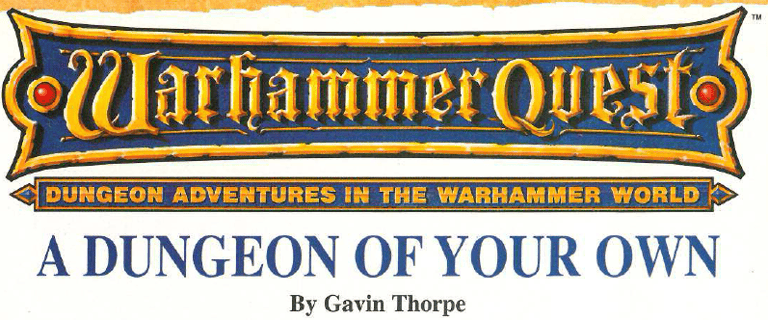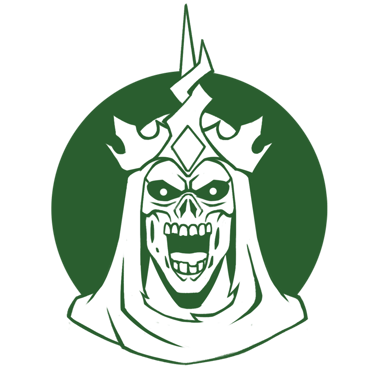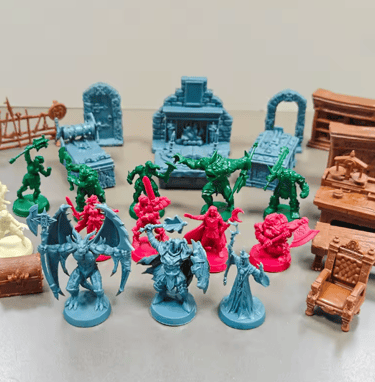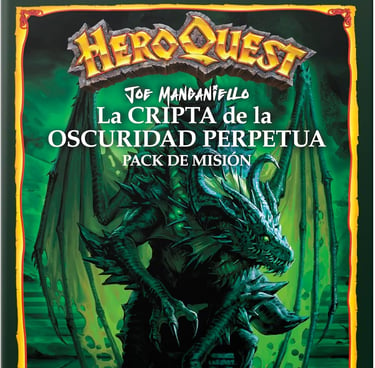Gav Thorpe - English version
ENTREVISTAS
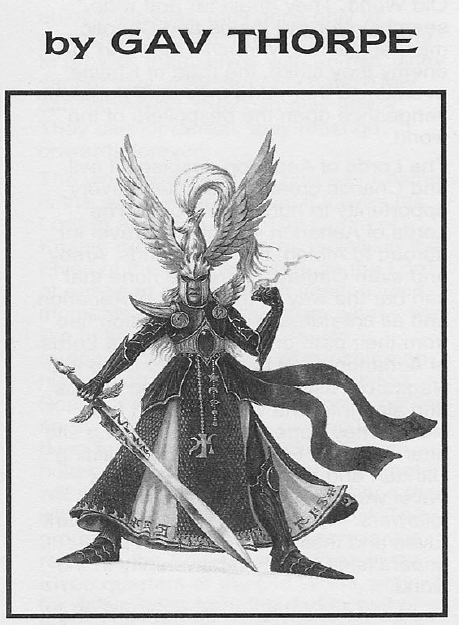

This time, we had the pleasure of interviewing Gavin Thorpe, a member of the Games Workshop game development team and a regular in the battle report sections of the White Dwarf magazine.
We focused primarily on one of my favourite games, none other than 1995's Warhammer Quest, considered by many to be the definitive dungeon crawler of the '90s.
I would like to thank Littlemonk for his collaboration with the questions in this interview.
Full interview with Gav Thorpe
Hello Gav!,
First of all, thank you so much for agreeing to this interview. The Warhammer Quest fan community really appreciates your contribution to the game and that you are keen to keep the game alive after all these years.
When did you first hear about Andy Jones's idea for this game? What were your initial thoughts when he presented his brainchild Warhammer Quest?
GT: I’m not sure how log Andy had been beavering away on the basic rules, but when I and the other Assistant Games Developers (along with Mark Hawkins and Ian Pickstock) were brought in to help playtest the game there was a full colour mock-up of the box and contents, including the floorplans and cards. So, a couple of months at least, I would say.
It looked a lot of fun. I was Heroquest-adjacent in the previous years; in that I was aware of it but never had Heroquest. I did own and play Advanced Heroquest though, and there was a nice continuation from there in look if a slightly more light-hearted approach.
What role did you play in the creation of Warhammer Quest? We know that you contributed so much to the game regarding the expansions and such. You're also credited in the Roleplay Book providing 'additional material'. How much were you involved in the creation of the main game and what exactly were your contributions to it?
GT: As a group the Assistant Games Developers spent about 2 months solidly playtesting the basic rules (alongside our other duties) with Andy and then working our way through a full campaign testing the Roleplay book. As part of that we were suggesting rules, coming up with treasure items, events and so forth, basically contributing to the development of the full game.
By the end of the playtest, it was more a matter of slapping down an objective room and seeing how many Blood Thirsters the party could handle! Okay, maybe not quite that abstract, but there was certainly a lot of combats testing all those D66 tables. D3 Bull centaurs or D3+1? How many Dragon Ogres can a level 10 Barbarian deathblow? It was a lot of fun. We then started subbing in some of the expansion characters like the Imperial noble, and so on as work began on them overlapped with delivering the final game.
I can’t recall any specific sections of the book that I wrote, but perhaps there were some short colour pieces or quotes from me.
During the development phase of the game, were you in contact with other designers of dungeon crawler games such as Jervis Johnson (Advanced Heroquest) or Stephen Baker (Heroquest)? Others?
GT: This is all took place in the Games Workshop design studio where Jervis also worked. I don’t know for certain but I’m fairly sure Andy would’ve spoked to Jervis at least – their desks were about no more than meters away from each other… That would’ve been in the design of the core game though. Jerv was busy with his own stuff and wasn’t involved in the playtesting a bit later development. I don’t know if Andy was in contact with Stephen Baker, I expect he knew him from the Heroquest days.
Although a small niche group, the original Warhammer Quest fan base was (and still seems) very dedicated and very enthusiastic. Do you think that this fan base is a reflection of the dedication and enthusiasm of that small group of people at Games Workshop, including yourself, that created this game?
GT: I think it’s more a mark of the spirit of community in gaming in general, and the reach of Games Workshop to find a broad enough audience for its games that there’s always a significant foundation of fans even after support from the company ends. All of the ‘secondary’ / specialist games have very keen following, and Warhammer Quest arrived at just the time that online communities could grow in support of particular games. Warhammer Quest itself, with its roots in traditional roleplaying, lends itself very easily to fan creation characters, adventures and all the rest. Though we could have produced far more adventurer and quest packs than we did in the end, they set a template that was relatively easy to follow – and we did what we could through White Dwarf magazine to show how the basic game could be pushed in different directions.
As far as the original rules are concerned, the fact that rolling a 1 during the power phase brings something bad (normally a tile full of monsters), don’t you think that it makes the dynamic of the game a bit tedious? This is even mentioned as a designer’s note in the rulebook, but do you know why the playtest team decided to leave it as is? Would you suggest any “house rule” to improve this power phase roll?
GT: We called it the ‘Roll a One’ Phase! It was also a good sourced of gentle mocking of our group wizard – played by Mark Hawkins – because we could always blame him for more monsters turning up when we least needed them.
I like the mechanic because it neatly does a couple of different things. Firstly, it emulates the old Wandering Monsters of D&D. You never know when something is going to find you. This means that, secondly, the adventurers are encouraged to keep on moving forward and getting stuck in. Every turn could bring more bad guys. You’ve just had a nasty fight, the bandages are running low but the objective room is coming up, every time that dice is rolled is a moment of dramatic tension.
The only thing I suggest to alleviate any repetitive feel would be to broaden out the possible consequences of rolling a one. Perhaps less combat encounters and more roleplaying opportunities. Use it to inject contention between the adventurers, or someone breaks or loses an item, and so forth. Get inspiration from traps and out of dungeon encounters.
Warhammer Quest is very famous. Even today it enjoys almost a cult status and is often cited as the best dungeon game in history, with many modern games patterning its format. Being there from the conception and throughout the entire history of Warhammer Quest, could you sense at the time that this game would leave such a mark in the history of dungeon games?
That’s very generous, though I would say Heroquest (and later Space Crusade) is probably responsible for more people coming to gaming in the early 90s than almost anything else. That WQ has gone on to have new editions, and licensed video games, is testament to the fundamental appeal of the dungeon crawl adventure game in general.
To be perfectly honest, at the time Warhammer Quest was quite expensive to produce and, like Man O’ War before it, the amount of card content made translations prohibitively costly, which somewhat reduced the reach via GW. Resources were tight and as was seen later with White Dwarf and then Fanatic releasing the unused material, we had extra adventurer packs and a quest pack that never got manufactured (the miniatures were not made, but we did get art at least!). With all the secondary games, there was a viable hobby and community, and a perfectly reasonable business, but in the great metric of sales it was simply more effective to put those resources into Warhammer and 40K. What’s good now is that these games are separated out from the ‘core games’ with their own design teams, so that no longer applies. Andy half-joked for a while that we should just license WQ from GW and run it ourselves for a £1 million a year business…
Warhammer Quest was only supported by Games Workshop for 3 years. Were you surprised that Warhammer Quest stopped receiving support and went out of print, or was it obvious to those of you working on the game that support was going to end?
GT: I sort of just touched on this, but the reality was that all secondary games came with a finite product tail. We were fortunate in many ways that White Dwarf went over to having card inserts in that period, otherwise we would have had even less opportunity to support the game. So, it wasn’t a surprise, but it was slightly disappointing at the time that my work on some of the adventurers went unused.
It seems that Warhammer Quest ended at its peak, with the release of the Bretonnian Knight (which has become a very popular figure and rules set today). So, it's not like the quality of Warhammer Quest was in decline. The components and writing were still top notch right up to the end! Do you think that the game's short, limited run contributed to its popularity?
GT: I think that sales figures did not match up to that perception. Warhammer itself was also I an odd phase, with most of the army books out and being revised through Fifth Edition and campaign packs being released to support the game. Then Third Edition 40K hit the scene and a huge thrust towards making more plastics became the core strategy. Design time was needed for that.
What is your favourite adventurer character? (of those who were released after the core game)
GT: There’s parts I love about all of them – the burglary opportunities of the Halfling thief, the idea of an Ogre Assassin, the pit fighting for the, er, pit fighter. But the Revenant Knight was possibly the most fun, with the whole tug of war between Khaine and Asuryan, it was a different approach to how adventurers’ careers could be shaped by their actions.
Do you think the current prices of Warhammer Quest material from 1995 is a testament to how great this game still is?
GT: Kind of. Nostalgia is a hell of a drug. I paid quite serious money for a vaguely good condition D&D Companion Set because I always wanted it as a teen and never got it. I have a complete (unused buy no shrink wrap) copy of Catacombs of Terror that I will probably sell for in the region of £600! That’s £200 more than my complete box of Mordheim… A huge part of the appeal is that, unusually for GW, the miniatures were never released back into the main ranges. That means far lower production numbers than anything that came in an army book, even before you throw in the actual gaming content.
The current rarity and expense of Warhammer Quest (1995) keeps a lot of people from acquiring and playing this game, but it also seems to help maintain its cult status. Do you think a reprint of Warhammer Quest would be a good or bad thing for the game?
GT: I think the world has moved on. There are many dungeon crawl boardgames, and even GW has updated Warhammer Quest with newer, slicker versions. And as I mentioned, there’s a LOT of cards in the WQ range and that has got more and more expensive to produce. Though perhaps not quite several hundred pounds, a reprint would not be cheap at retail price.
The thing is, at its heart there’s not a lot that’s particularly special about Warhammer Quest. The mechanics could certainly be improved in light of far more modern games. The adventurer miniatures are nice (very dynamic for the time), but the monsters are certainly monopose mid-90s quality. The floorplans are still amazing though! The real hook comes from the whole package, both a really straightforward but fun boardgame, or a deeper dungeon bash roleplaying game.
The recent re-release of Heroquest is quite telling though. Rather than being released into mainstream stores with a TV commercial like the original that would bring in a new generation of gamers, it was crowdfunded nostalgia-bait for middle aged folks like us who would drop $200+ to be teenagers again. It’s hard not to see a Warhammer Quest relaunch being treated the same way, or at least seen in the same light.
Looking at the current Warhammer Quest games such as Cursed City and Silver Tower; how realistic do you think it would be for Games Workshop to reprint an updated version of the original Warhammer Quest?
GT: I never say never to any questions like this, because GW have a habit of doing stuff that previously didn’t make sense, but I would say it was long odds. With the arrival of Warhammer – The Old World, I supposed anything is possible. But even ‘reprints’ of Space Hulk are updated with new miniatures, new books, so I doubt we'd see WQ in that exact format again.
I have left this question at the end of the interview because it is a bit special for the Warhammer Quest community from Spain. Not sure if you are aware of this, but the Spanish version of Warhammer Quest was released very late (March 1999), and it came with half of the contents of the game shown in the rest of Europe. There was no roleplay book, no plastic doors, the treasure and event cards were replaced by tables in the rule book, and it came with just 54 miniatures. Did you know this? Do you know why Games Workshop made that decision?
GT: I was sort of aware of this. As I said, WQ had a high production cost, and most of the overseas GW companies that required translations didn’t take it at all because they did not think they had enough customers to make that money back. At the time something might sell 50,000 copies in the UK and only 5,000 in Spain. I suspect that getting a stripped back version was the compromise GW Spain made to get it to market at all, perhaps because historically Spain was a much stronger Fantasy than 40K market.
Thanks again for your time answering these questions, and for your contribution to make the ultimate dungeon crawler of the 90s.
Thank you for your continuing enthusiasm! Also, by happy coincidence, please let folks know that I am a guest at https://www.ficzone.com/ in Granada (Spain) 26/27 April!
Cheers, Gav
If you want to know more about Gav personal work, you can visit https://gavthorpe.co.uk/author/
